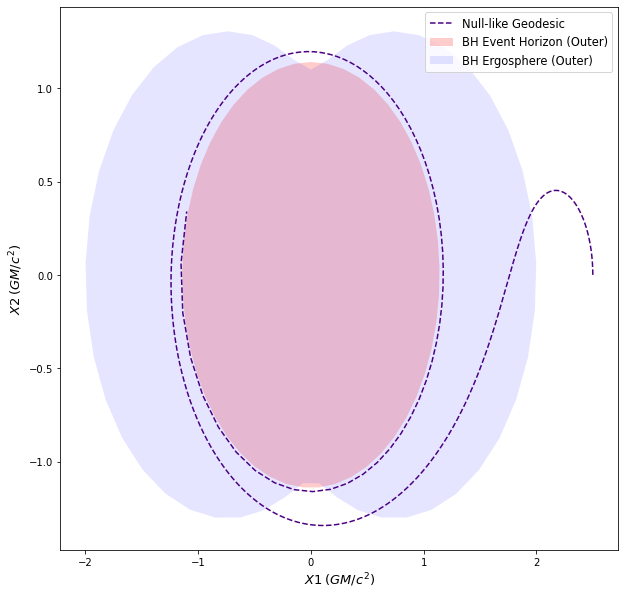Visualizing Frame Dragging in Kerr Spacetime¶
Importing required modules¶
[1]:
import numpy as np
from einsteinpy.geodesic import Nulllike
from einsteinpy.plotting import StaticGeodesicPlotter
Setting up the system¶
Initial position & momentum of the test partcle
Spin of the Kerr Black Hole
Other solver parameters
Note that, we are working in M-Units (\(G = c = M = 1\)). Also, setting momentum’s \(\phi\)-component to negative, implies an initial retrograde trajectory.
[2]:
position = [2.5, np.pi / 2, 0.]
momentum = [0., 0., -2.]
a = 0.99
end_lambda = 150.
step_size = 0.0005
Calculating the geodesic, using the Julia back-end¶
[3]:
geod = Nulllike(
position=position,
momentum=momentum,
a=a,
end_lambda=end_lambda,
step_size=step_size,
return_cartesian=True,
julia=True
)
e:\coding\gsoc\github repos\myfork\einsteinpy\src\einsteinpy\geodesic\utils.py:307: RuntimeWarning:
Test particle has reached the Event Horizon.
Plotting the geodesic in 2D¶
[4]:
sgpl = StaticGeodesicPlotter(bh_colors=("red", "blue"))
sgpl.plot2D(geod, coordinates=(1, 2), figsize=(10, 10), color="indigo") # Plot X vs Y
sgpl.show()

As can be seen in the plot above, the photon’s trajectory is reversed, due to frame-dragging effects, so that, it moves in the direction of the black hole’s spin, before eventually falling into the black hole.


